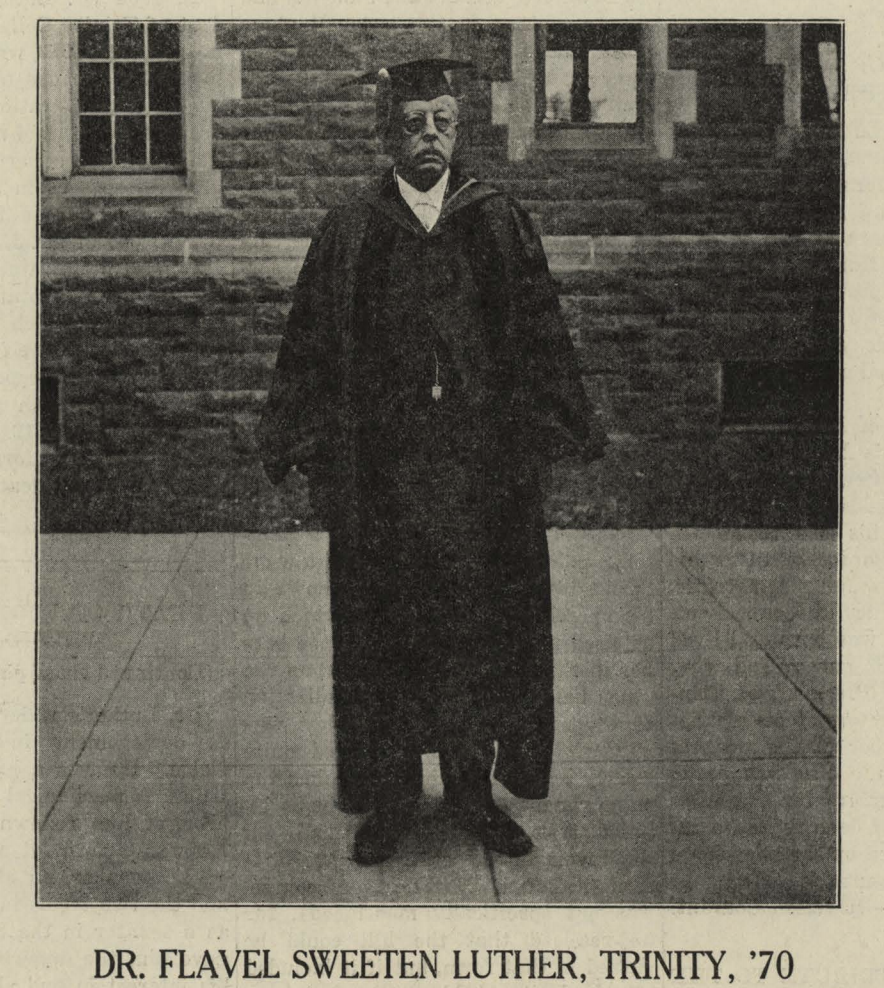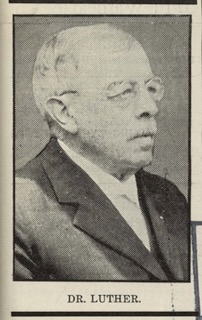Kip Lynch ’22
Executive Editor
Though not well-known among students at Trinity today, Dr. Flavel Sweeten Luther, Jr. ’70 was regarded highly by his contemporaries and oversaw celebrated events such as the visit of then Colonel Theodore Roosevelt and J. Pierpont Morgan during his tenure as President of Trinity College from 1904 to 1919. The Tripod offers as its Sunday Feature a brief history and recollection of the man who steered Trinity through the early years of the twentieth century and the First World War.
According to a 1928 issue of The Trinity Tripod, Flavel Luther was born in Brooklyn, Connecticut to a cabinetmaker whose family traced its heritage to Johannes Luther, brother of Martin Luther. He graduated at 19 from Trinity, ranking third in his class of 1870 after winning first prize in mathematics during his sophomore year. The Tripod reports that “in the fall following his graduation here, he went to Troy, N. Y., where he took charge of a parish school of 100 members, and in addition to his school work began the study of theology.” Luther was soon ordained a deacon in the Episcopal Church and received his MA from Trinity in 1873.
After serving as rector at an Episcopal school in Racine, Wisconsin, he was appointed to the chair of mathematics at Racine College. He served in a similar position at Kenyon College before returning to Trinity as a professor of mathematics. Luther also worked as a consulting engineer for the Pope Manufacturing Company, which was the largest bicycle manufacturer at the time. In this position, “he had chance to display his inventive skill, and one of his inventions was used on every bicycle manufactured.”

After teaching mathematics at Trinity for 21 years, Flavel Luther was elected President of the College. The Tripod reported that “It was during the years of his administration that Trinity rose to athletic supremacy and the library was erected.” Retiring due to heart trouble, Luther stated “I am going out to California because I don’t want any graduates telling me how poorly my successor is running the college.”

The Rev. Dr. Remsen Brinckerhoff Ogilby, who would later serve as President of Trinity College from 1920 to 1943, remarked that “Doctor Luther’s name is familiar to all in any way connected to Trinity College. His devotion was absolute.” He described Luther as “intensely devoted to his country. He was also active in politics and was a staunch supporter of President Teddy Roosevelt in the Bull Moose movement and served two years in the State Senate.” Roosevelt would, in fact, come to Trinity at Luther’s invitation in 1918, where he spoke at Commencement. As Professor of Economics, Emeritus, Ward Curran ’57 has written in his concise history of the event and Roosevelt’s address that day, the event resulted in the placement of the commemorative “Luther-Roosevelt Stone,” which is how most contemporary students may recognize the name. The aura surrounding the Luther-Roosevelt stone, as Curran and others have aptly-noted, is a new tradition: it likely began in the 1970s, after the Commencement platform was moved onto the quadrangle.
Luther, as the Tripod noted, was at all times keenly alive to the scientific contributions of the day.” Ogilvy noted how “He was very close to the student body and all testify of their intense devotion to him. He was whimsical but perhaps this was a key to his character.”
Dr. Babbitt, a member of the faculty, also paid tribute to Luther, stating “For him, the college stood above all else, and to it he gave his best service, and desired that the college in its turn should give its best service to the community.”





+ There are no comments
Add yours